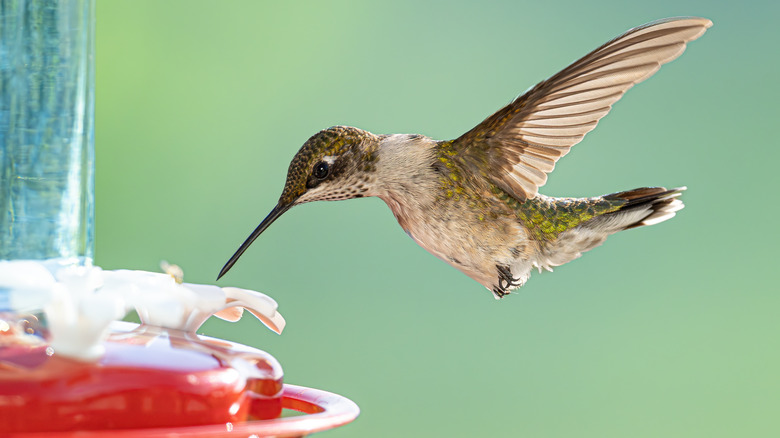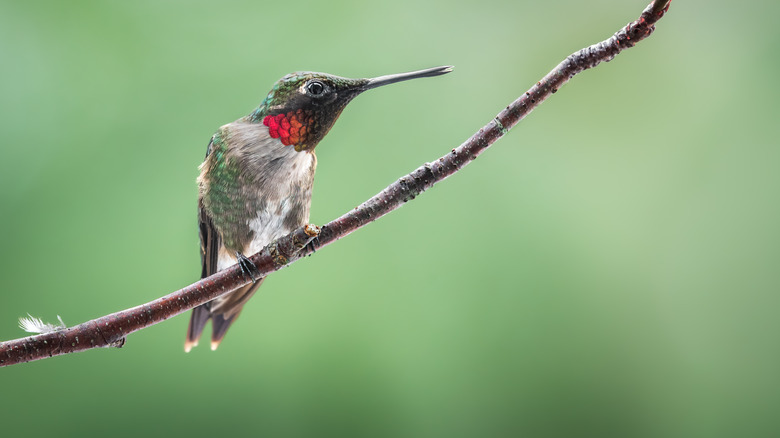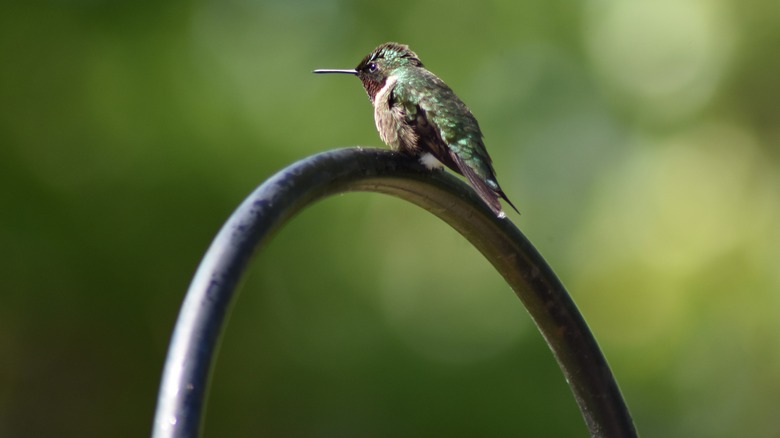The Sweet Reason Your Hummingbird Feeder Needs This Extra Garden Feature
When supporting hummingbirds in your yard or garden, it's critical to offer them basic necessities such as food and water. In addition to putting up a feeder, you might use homemade hummingbird nectar and plant a few flowering plants they enjoy. You might even consider placing a water source near the feeder for these tiny birds to have a quick sip throughout the day. A less commonly thought-of feature to add near hummingbird feeders is a dead branch or stick, but it can serve an important purpose.
Also called a "snag," a dead branch or stick can be a useful feature in a hummingbird's territory. In fact, hummingbirds are among the many types of wildlife that use snags, along with other species like songbirds, small mammals, and reptiles. The sticks can act as perches where a hummingbird can take a quick respite from zipping around your yard. Additionally, a hummingbird can use the spot as a lookout area of sorts, where they can safely monitor their surroundings for possible predators and competitors. If a particular hummingbird is a newcomer, the snag also gives them a chance to survey your yard or garden from a safe distance as they scope out what you're offering in terms of food, water, and shelter.
How to support hummingbirds in your yard with snags
Now that you know the importance of a snag to a hummingbird, the question is how you can set one up in your yard or garden. One suggestion is to place a dead branch or stick directly in the ground. It should have small twigs that can accommodate the size of tiny hummingbird feet. Ideally, the spot should be within 10 to 20 feet of feeders, but not out in the open where a predator might see the hummingbird. To that end, it's also worth knowing the predators that could be eating hummingbirds in your yard, like blue jays and owls.
Some experts even suggest perches that are further away at 30 to 50 feet from feeders and flowers. Since not everyone has this much room around their outdoor spaces, the key here is to place the snag at as safe of a distance as you can. Consider placing the snag near bushes, trees, or even the side of your home so the bird has some cover while they're taking a rest on top of it. Above all else, the perch should be high off the ground to allow these small birds to have an aerial view of their surroundings while resting. Aim to make it at least as high up as the feeder.
What to do if you can't add branches for hummingbirds
Not everyone can place a dead branch in the middle of their yard or garden, and some might not like the appearance of the snag sticking out of the ground. The good news is you do have some other options. One alternative is to place a large dead branch in a living tree around your property. You can also refrain from removing dead sticks in trees and shrubs so a hummingbird might repurpose them as perches. A shepherd's hook is another possible hummingbird perch.
If you have a deck or patio, you may even be able to make your own perches with wooden dowels and wire and hang these up for hummingbirds to come visit. Whichever of these methods you choose, you will know it is working once you see hummingbirds use them. As with putting up a hummingbird feeder though, patience is key, as it may take some birds several weeks to investigate the snag and determine your outdoor spaces are safe. You can also put the snag up at the same time of year you put out your hummingbird feeder, so that these birds have everything they need at the start of the season.


